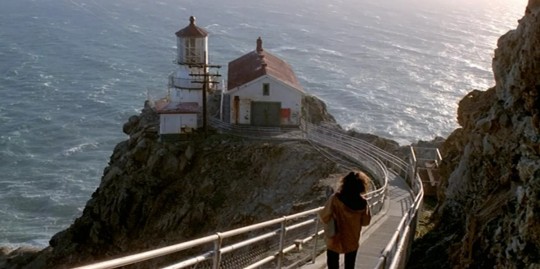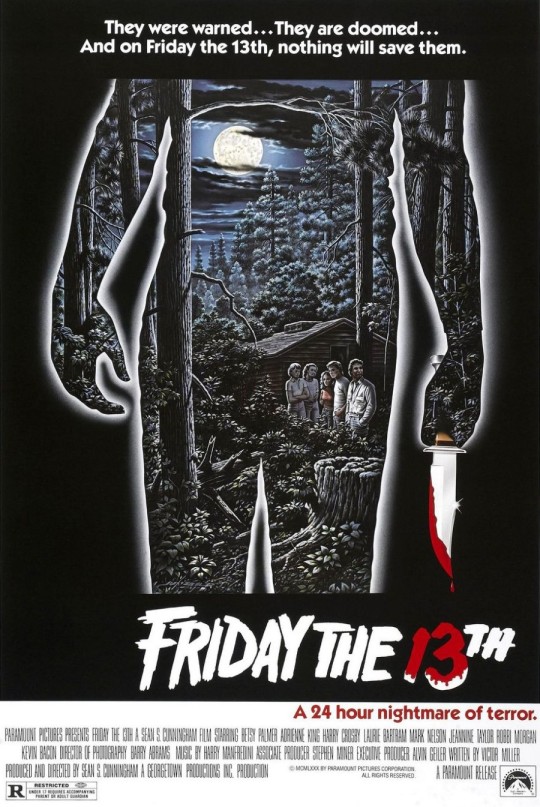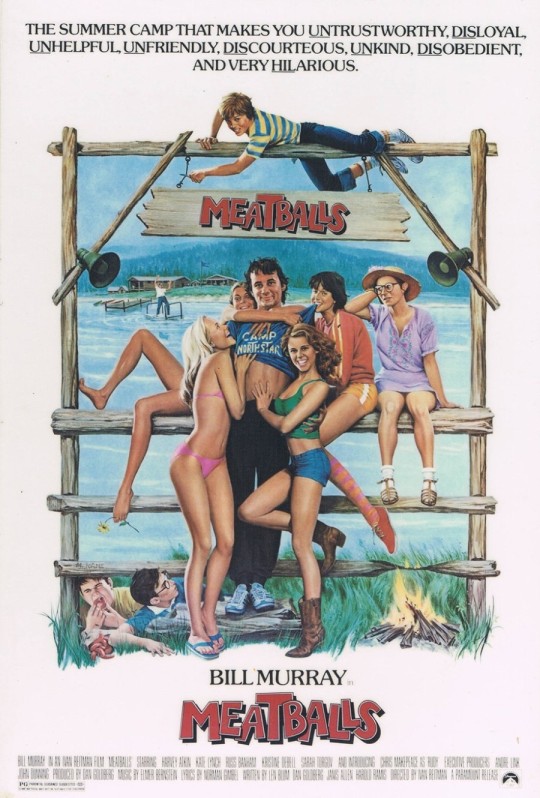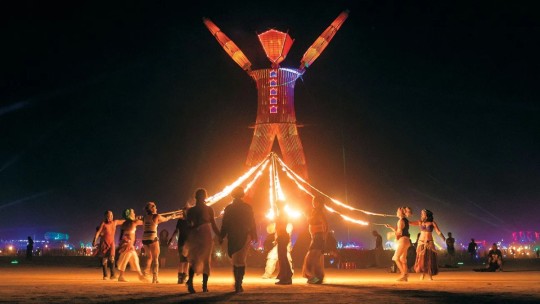Newspaper reporter, TV/movie reviewer and self-appointed pundit of pop culture.
Don't wanna be here? Send us removal request.
Text


I should have added this to my car ages ago. :)
0 notes
Text
The Summer Camps Surrounding Apex
The history of white settlers' explorations of the environs surrounding what would become Apex is a history of whites poking their noses into places where the local Native Americans knew better than to be.
Head southwest on the current Apex City coastline that encompasses "Bitter" Bierce Bay, and you'll find yourself in the Whispering Woods, which lead out to Apex Point at the southwesternmost tip.
Apex Point is itself notable as the site for the second historic lighthouse serving Apex.
Monolith Island, which sits in the middle of Bierce Bay, became the site of the Monolith Island Light in 1855, followed by Fort Maximilian M. Maximus in 1861, before the Civil War military outpost was converted into the Fort Triple-Max maximum security prison in 1946.
Meanwhile, Apex Point became the site of the Lensman Lighthouse in 1875, which itself has hosted Apex's first radio station, KAPX 750 AM, since 1930.
Dr. Albert Atlas Fell, of the Quatermass University of Abstract and Applied Sciences in Apex City, broadcasts from the lighthouse radio station on weekends, logging meteorological conditions, issuing advisories to the ships at sea, and playing peaceful, contemplative music.
The Whispering Woods constitute a microclimate, closer to the cool, rainy Pacific Northwest than to the hot, arid standards of the rest of Calizona.
Within their depths lies a seemingly idyllic body of water comparable to Oregon's Crater Lake in its natural beauty, but closer in its origins to Arizona's Meteor Crater, since it was formed by a meteorite impact rather than a volcanic eruption.
The peoples of the Apex Pueblo warned whites against settling in Whispering Woods or around what would become known as Lake Kinkade, after Nathaniel "Natty" Kinkade discovered the latter in 1851.
But as was so often the case, the whites shrugged off what they saw as primitive superstitions, even as continued protests from local Native Americans, contrary to their typical calls, have kept either Whispering Woods or Lake Kinkade from being declared public landmarks.
Natty Kinkade was the first to observe that the densely forest-lined seclusion of deep, clear blue waters appeared to be "painted with light," which made it an appealingly photogenic site for a succession of summer camps.
Camp Placid Waters for Clean Living opened on the banks of Lake Kinkade in 1927, and has gained notoriety in the decades since as "Camp Deadpool," due to recurrences of reported and rumored harvests of young campers and camp counselors by mask-wearing mass-murderers.
Camp Smiling Coyote for Sacred Clowns was founded in 1954, by retired Marine Corps Cpl. Samuel Charles Smiling Coyote, who originally hailed from the Apex Pueblo, so one might wonder why he didn't know better than to venture out to Lake Kinkade, if they didn't know him.
In the service, not only did he claim that his first and middle initials of S.C. stood for "Sam Clemens," as he insisted was befitting his storytelling talent, but he also served as a "Code Talker" during World War II.
Since ignorant white folks insisted on sending their innocent kids into the cursed, merciless wilderness, the man who'd developed a damnable compulsion to stand up for the weak against the strong decided he'd create a haven for scrappy underdogs and socially awkward misfits.
Of course, nothing good can be done for the disadvantaged, especially if it's being done by a historically oppressed minority, without inspiring a backlash from the privileged class, which is what inspired the creation of Camp Atlas-Seaboard for Competition and Survival in 1958.
Which is how Lake Kinkade wound up with a summer camp plagued by serial killings, a camp providing shelter and encouragement for weirdos and outcasts, and one pandering to pampered rich brats, even before the area gained a haunted hotel in 1968.
The Bean-Shìdh family imported what was originally their ancestral keep of Samhain's Hearth Inn and Tavern from Callander, Scotland (also the birthplace of Angus Odysseus Battle-Craft), rebuilding it on the rocky shores of Apex Point, near the Lensman Lighthouse.
As ill-advised as Charlie Smiling Coyote considered other white folks' settlements in the area to be, he recognized that the mother-daughter duo of Bonnie and Bridey Bean-Shìdh brought their own unique spiritual energy to the place, even if they themselves didn't fully realize it right away.
Over on the other end of the outskirts of Apex City and Coral Shores, the Scar Range Desert that had become the site for a succession of obscure military installations would ultimately find itself a hotbed for countercultural activity.
Well northeast of Coral Shores, former Sixties flower child Dulcimer Discordia "Cordy" Condor started the temporary autonomous zone of Solstice City in 1986, to host what would become the annual Flaming Paintbrush Midsummer Free-for-All.
Perhaps the festival's most notable feature is the "Infernal Titan," a gigantic wooden effigy that's set ablaze during the culminating ceremonies of the summer's revelry, communal camp-out and exchanges of experimental artistry in the Scar Range Desert.
Ironically, while this occasion threatens to compromise the operational security of Dr. Bianca Yong and her Agents of ABOVE in their repurposed military base, Cordy Condor stages Flaming Paintbrush, at least in part, to provide cover for the clandestine activities of her older brother.
When Air Force Capt. Mandolin Corelli Condor was flying combat missions in Vietnam, his kid sister Cordy was protesting the war, but her peace activism was always intended to protect her big brother, who was practically a surrogate father to her, due to their generational dividing line.
Not long after he started piloting the Skyshark experimental attack helicopter in 1984, the elder Condor finally reached out to contact his estranged sister, who was only too happy to see him again, and after some thought, she figured out her own way to run interference for the Skyshark.
The chaotically organized seasonal congregation in the desert obscures many traces of the Skyshark's concealment in the area, however irritated a Vietnam veteran like Condor might be to indirectly rely upon his sister's hippie freak friends to continue his covert missions in America.






1 note
·
View note
Text
The Private Eyes of Apex City
Austin Kingsley and Mitzi Klingfeld aren't the only grownup gumshoes looking into mysteries and criminal misdeeds in Apex City.
Reid Warne knows how to navigate a forensic scene, managing to tread carefully even though the treads he's leaving are the tracks of his wheelchair, while one of his fellow licensed private investigators, wisecracking tough guy Bruno Hudson, constitutes one half of Nighthawks Investigations (whose name was inspired by the "Nightshade Investigates..." comic strip, distributed by Kingsley Features Syndicate), and which was bankrolled by former Glamourpuss Magazine cover girl Cybele Seagrams.
To preserve the statements they solicit from witnesses and other sources, Bruno and Cybele have a habit of recording their cases live via compact video, which can lead to snarky running commentary as they play to the camera.
Even more media-savvy, but vastly less given to snappy or sexually suggestive patter, is Richard Corinthian, who acquired the title of "The Auspex Inspector" from his six-season syndicated TV series, "The Wandering Auspex Inspects..." (likewise inspired by "Nightshade Investigates..."), which ran from the late 1970s through the early 1980s.
Richard claims to be psychic, to assist in law enforcement investigations, by playing up his supposed Romani "fortune-teller" heritage, and yet, while almost all of his ostensibly uncanny abilities can be chalked up to keen observational insights and skilled stagecraft, his Romani heritage is more genuine than he lets on (his birth name was "Roman Corinthian," which he correctly estimated would be a touch too "ethnic" to appeal to more mainstream audiences), while his insights include flashes of what would seem to be psychic visions.
Not that "The Auspex Inspector" is above commercial shilling, since the success of Time-Life Books' "The Enchanted World" and "Mysteries of the Unknown" series led Enigma Media to begin publishing "Myths & Mysteries of the Otherworldly" in 1987, for which Richard Corinthian serves as the line's suitably spooky, brooding spokesman ("From fairy-tale fables to paranormal phenomena... If it's out there, it's in here").
youtube
1 note
·
View note
Text
I've been reviewing films professionally since 2017, and this marks my very first negative reader response to one of my reviews. I could not love it more.
0 notes
Text

Hello from the first of the four nights of the Port Townsend Film Festival, which I am covering for the Port Townsend Leader newspaper.
0 notes
Text
And as I continue to cast a broad net for writing assignments, this old dog is finally learning some new tricks, which is why I now have a Linktree page, which I would welcome all of you to share far and wide.
5 notes
·
View notes
Link
I only just now realized that I never shared when Sheila Bender interviewed me about writing arts reviews for the Port Townsend Leader on KPTZ 91.9 FM, a job that I still owe Lloyd Mullen for creating for me.
1 note
·
View note
Link
How can you tell “Dungeons & Dragons: Honor Among Thieves” is inspired by the true spirit of “Dungeons & Dragons,” and isn’t just aping the influence of Tolkien? As I point out for Comic Book Resources, OWLBEARS, baby.
1 note
·
View note
Link
Even before Peacock renewed “Night Court,” the sunny, slapstick sitcom wasn’t as safe as some might remember, as I wrote for Comic Book Resources.
0 notes
Link
Since “Poker Face” got renewed for a second season on Peacock, Comic Book Resources allowed me to break down what got changed, and what stayed the same, in its first-season finale.
0 notes
Link
Captain Liam Shaw, played by Todd Stashwick (or “Grimey,” as he likes to be called), is both “Picard” Season 3′s breakout character and an echo of a classic character from “The Simpsons,” as I reveal for Comic Book Resources.
1 note
·
View note
Link
Thank Comic Book Resources for allowing me to analyze how Scott Lang in “Ant-Man and the Wasp: Quantumania” proves there’s more than one way to portray Peter Parker.
1 note
·
View note
Link
While NBC’s Night Court has always run on one-off gags, it also has a rich existing history of characters to draw from, as I elaborate on for Comic Book Resources. Looking back on some of them will have you saying, “I’m feeling much better now!”
4 notes
·
View notes
Link
In many ways, MTV’s Daria Morgendorffer and Netflix’s Wednesday Addams are the same acid-tongued high-IQ teen girl, simply a generation apart, but as I point out for Comic Book Resources, Wednesday is going places Daria never could.
0 notes
Link
For those of us old enough to remember the original Night Court, Comic Book Resources allowed me to take stock of the character of Abby Stone, daughter of the departed Judge Harry, on the new Night Court.
0 notes
Link
It’s the best new murder-mystery show in years, and while plenty of the strengths of “Poker Face” on Peacock are obvious, some are surprisingly subtle, as I point out on Comic Book Resources.
0 notes
Link
One thing I'd hoped to do, by getting hired by a site as well-read and well-regarded as Comic Book Resources, was to introduce concepts my friends and I had played around with — such as "Peak '80s" — to a broader audience. Based on this morning's Google search, I've apparently succeeded:

The 1980s were actually two eras: Peak ‘80s, and the subsequent transition into the 1990s. As I write for Comic Book Resources, the latchkey kids’ childhoods took place during Peak ‘80s, and effectively ended when our square-shouldered cartoon robot dad died.
I even graphed my data:

3 notes
·
View notes